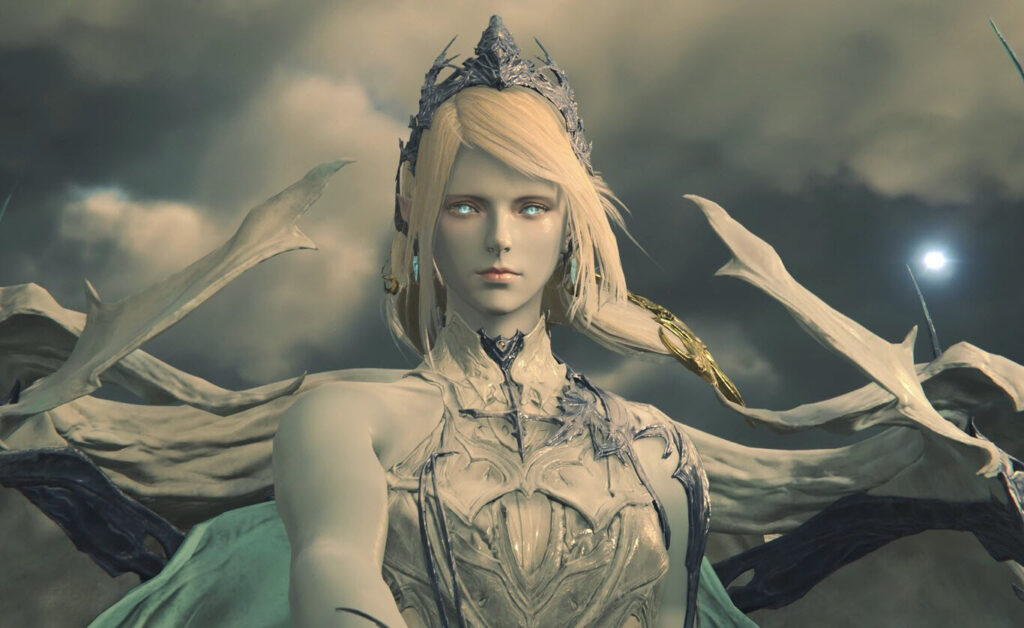Gaming | May 28, 2023

We had a first hands-on experience with ‘Final Fantasy XVI’ in London a few months ago. There, we witnessed how Square Enix has completely revamped the traditional combat systems of the franchise, replacing the more strategic battles or turn-based mechanics of a seemingly distant past with real-time carnage, abundant combos, and visual spectacle. Now, we’ve had the opportunity to taste this installment once again, which will arrive on June 22nd as a timed exclusive for PlayStation 5.
However, this new visit to the world of Valisthea had a very different focus. Three months ago, we saw relentless action and a competent system for managing abilities and powers that allows us, on one hand, to equip and enhance our character in the most effective way possible with slow-motion rings, automated evades, attacks, and potions… And also the ability to use and rotate abilities of the gigantic Eikons to recharge magic, with distinctive melee attacks, magic, and special abilities.
Overall, the system is somewhat complex and serves, among other things, for each player to determine the level of difficulty they want to face in this adventure. However, the system was somewhat overlooked in this new several-hour immersion in the game, which briefly allowed us to delve into the story and discover that if we detected elements of ‘Devil May Cry’ in our first contact (the combat is the responsibility of the same man, Ryota Suzuki, whom we also saw in ‘Dragon’s Dogma’), this time the clearest influence is ‘Game of Thrones’.
This hands-on experience with ‘Final Fantasy XVI’ focused on the early stages of the game, where we delved into the world of Valisthea. In Valisthea, there exists incredibly powerful magic linked to the Mother Crystals, and remnants of a technologically advanced civilization that existed in the sky fifteen centuries ago are abundant. However, the abundant doses of political fiction come from the six nations (five at war and one neutral) vying for control over Valisthea. This conflict is further intensified by gigantic monsters known as Eikons (Phoenix, Shiva, Titan, Garuda, Leviathan, Bahamut, Odin, and Ramuh), and an important imbalance in the situation arises with the emergence of a new fire Eikon, Ifrit.
The protagonist of the game is Clive Rosfield, who, despite being the eldest son of the family that controls Rosaria, is not a Dominant, meaning he cannot manifest the Eikons. It is his younger brother who can summon Phoenix, and Clive must protect him as the heir to the throne. This is where the intrigues begin, with family members who are not what they seem, nations at odds, and of course, Clive seeking revenge and leading a group of adventurers. We will have the opportunity to witness an abundance of Eikon manifestations as the haiku-style battles involving them are an important part of the game.
In addition to immersing ourselves in the intricate story, which we are sure must undergo numerous twists and turns throughout the game’s development, we also had the opportunity to delve into the open-world features of the adventure. This was something we couldn’t see in the more linear and action-oriented early levels we visited in London. Thus, we wandered through wooded areas and more open spaces in Rosaria, taking on some side missions to transport goods on behalf of a troubled secondary character.
In these landscapes, we explored and hunted wild animals, improving our combat skills by facing a few wild beasts. We also caught sight of some of the fallen structures from the sky, remnants of the past civilization now turned into legend, and engaged in battles with the game’s minions — a significant number of mischievous goblins accompanied by their own mini-bosses.
The result is an even more complete game than what we detected during our first eventful stroll. The open world is complemented, for example, by a hub, a refuge for allies where we can manage a significant portion of the missions, engage in dialogues with members of our team while receiving a few side quests, and stock up for the adventure. In other words, this new ‘Final Fantasy’ may have emphasized thrilling action, but it hasn’t forgotten that it’s the details that enrich a world, whether or not they are laden with palace intrigues.